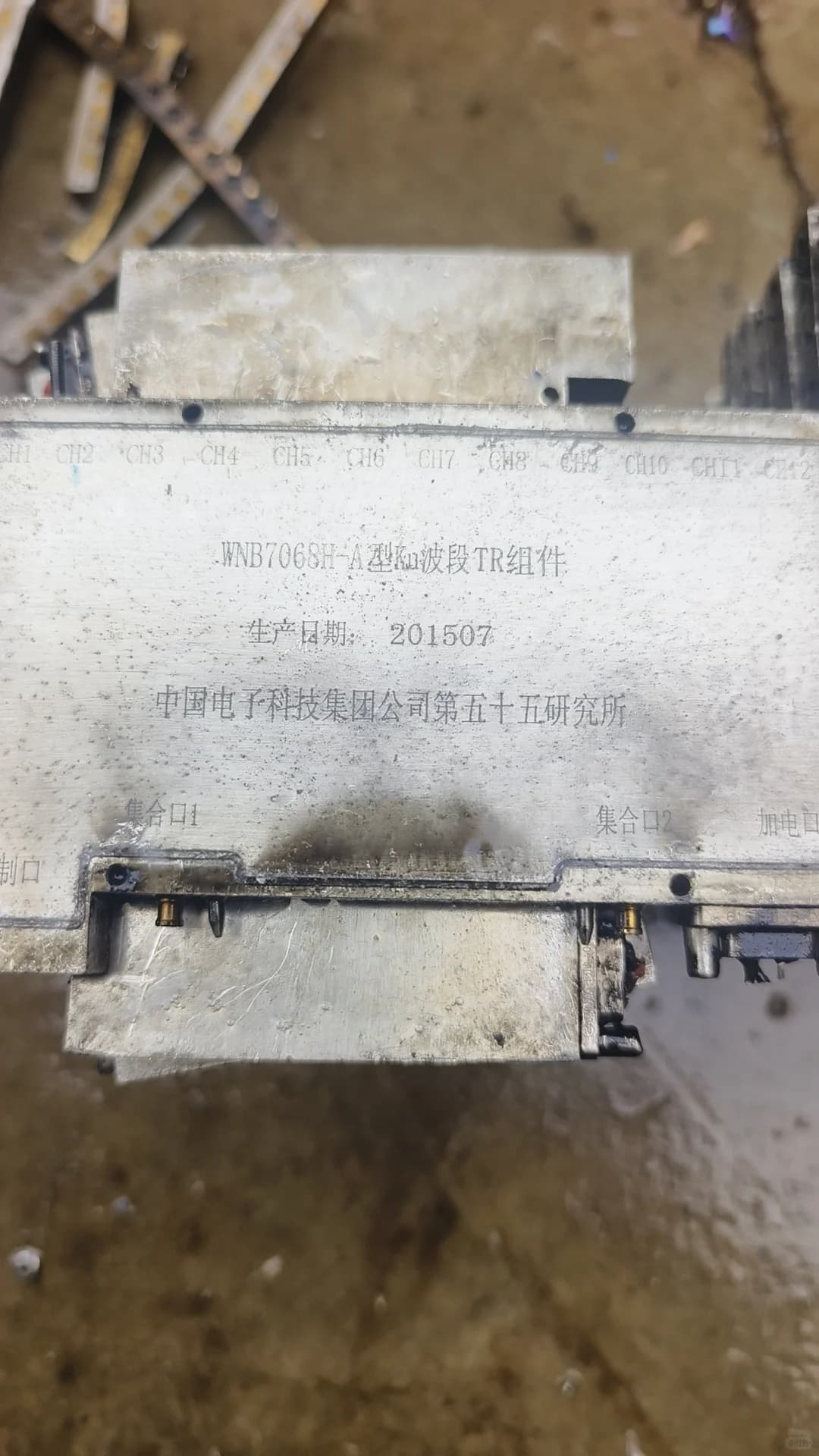it’s for obstacle avoidance, mainly avoid being knocked down by electric wires. there is also bigger loadout for topographic mapping and scanning crops.
The evidence provided doesn’t look like the plate in any way. Do u have a picture of what a wave guide looks like. I personally am going to say I can’t make the conclusions based on this but I 100% do not understand how you comprehended this as wave guide based off a bunch of holes. Also, there is a reason they are called ‘slot antenna array’ and not hole antenna array.
I found one.

well, new evidence, I guess this is convincing enough. as I said, just some kind of back plate, and limiting frame
and @TIGER_TANK_1 the T/R unit is even from 10 years ago, I guess they just produced too many of AESA units.
Are these pictures from the recent “event”? Also, I baidu’d the wnb7068h. Apparently there is a wnb7068h-b, on a bid website (now expired)
yes
I guess it’s not only just for missile, but other uses
Dual use technology I guess. This stuff’s gonna end up in someone’s microwave oven someday!
Why Ku band though… I’m not too familiar with this stuff, but isn’t the power to frequency shift for each TR module, that makes AESA good and hard to detect?
As I know, one radar can only have one band, you can make a dual band AESA, because it’s formed by units, but it’s just make them into 2 smaller radar.
this kind of design often seen on ships and AWACS, 2 different band radar back to back or stand together, and share same backend, usually one for searching and one for tracing.
but in missiles seeker, a limited environment, it means performance loss.
I remember advanced AESA radar has it’s way of making it hard to detect, usually against old type RWR, by managing its tracking pattern
the picture of the wnb7068h T/R units could from LY-80, this matches the time, delivered in 2016
the others still match the pl-15 seek image
That’s PL-12AE lol.
Do u have the full pic? What was it hanged under.
Speaking of which, maybe someone can write a PL-12A suggestion over the suggestion board so we can have something to fill the gap between PL-12 and PL-15/PL-15E.
That wasn’t the backplate though, the front has square style antenna and the modules are on the back, This missile has quite a substantial number of antenna–but about half of what was shown on the AAM-4B test subject it seems.
If this is indeed the same wreckage and scrap, that is an AESA radar.
That thing showed according to u nearly as many as an F35 lol.
Yes but count is not the only factor, there is also size and power among a myriad of other things.
I’m sure it’s a quite large one. a test bed for aesa seeker not just AAM-4B.
Aesa unit has its size and performance limit, that’s why the number of units is often used as performance values(other things influences too, but units sets mechanical limits)
it’s a fixed aesa in a 8 inch missile, I believe it’s the biggest aesa that can fit in
Based on what the plate with writing? I’ve seen plates with writing like that with the same square mm as a penny on things like turbos let alone advanced AESA seekers.
I doubt it is the biggest, I think there were a great many other factors but certainly it is more than sufficient with over 400 T/R units for basic air to air missile duties. Comparing it to what we know about AAM-4B, however, suggests it is still behind the “West” as far as fitting AESA seekers in a missile goes. It would be pure conjecture, but I assume things like the AIM-260 will simply beat it outright on paper.
That is only on paper though, and of course, it has still had a wildly successful debut against the Rafale.
should be less, same for the real AAM-4B seeker.
you need the size of AIM-54 to hold 400 units.
most calculations are around 300 units, already very strong for a missile seeker, needs exaggerated battery and heat dissipation for a missile.
I think your count of the AAM-4B seeker test is also incorrect, considering this↓
and area of the radar cowling is often used to estimate the number of radar units
it’s a test unit, not real seeker not for install, and the name plate is on pedestal, no need to be small.







